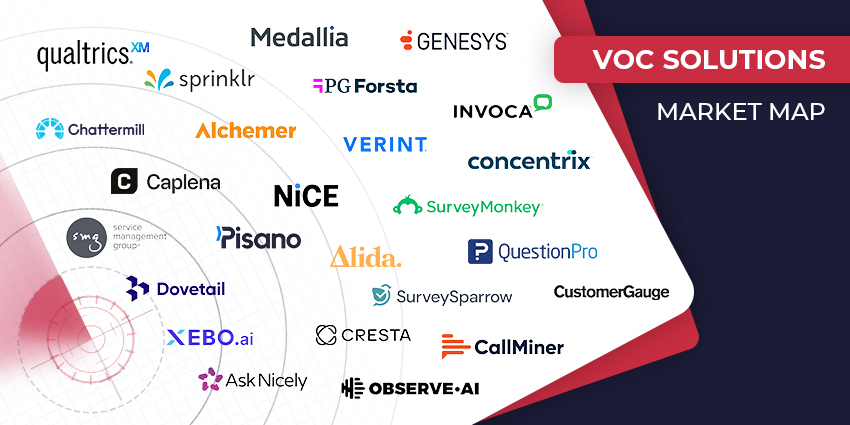Trust in AI for customer experience is now the defining factor for CX automation success. As businesses race to deploy AI-driven service, customer confidence hasn’t kept pace. Most users still hesitate to trust bots with sensitive issues—proving that transparency, fairness, and human oversight remain the true limits of AI in CX.
Automation is gaining momentum in customer experience, but trust isn’t keeping pace. Gartner says 64% of customers prefer companies not to use AI in customer service, even as businesses race to adopt it.
That resistance isn’t stubbornness. It reflects the fact that customers draw a clear line between what AI could do and what it should do. When the stakes are high, billing, problem resolution, financial advice, confidence matters as much as speed.
This is where companies need to start embracing the Trust Triad: Transparency, Fairness, Reversibility. These three principles set the boundaries for AI customer trust – what automation earns the green light and what remains human.
Without customer confidence in AI, the efficiency gains risk undercutting the brand instead of strengthening it. The weakness isn’t in the technology itself, but in how well trust is earned around its use.
Reality Check: Why Trust in AI for Customer Experience Remains Limited
Companies may be rushing to put automation everywhere, but customers haven’t signed up with the same enthusiasm. Workato found only 24% of customers feel comfortable with businesses using AI to handle complex tasks, like making policy decisions or dealing with complaints.
It’s easy to see why trust in AI isn’t as strong as it could be. Customers are constantly reading stories about bots that accidentally reveal important data, treat people with bias or discrimination, or make mistakes that cost companies (and customers) thousands.
Research from the World Economic Forum captures the divide well. Customers are generally fine with AI handling simple tasks – things like package updates or resetting a password. But when the issue is sensitive, a billing mistake, a complaint, a medical query, they expect a human. The line isn’t about what AI is technically capable of; it’s about what people feel comfortable letting it do.
That’s the crux of the trust problem. People aren’t saying automation has no place. They’re saying: “don’t push it where it doesn’t belong.” If businesses ignore that, they risk losing the very confidence that keeps customers loyal.
Building Trust in AI: The CX Leader’s Framework
Automation is everywhere. Customer service, sales, even marketing campaigns are being reshaped by AI. Businesses are racing ahead. Customers, not so much.
Every day, people don’t judge AI only on accuracy. They judge it on whether it feels fair, whether they know when it’s in use, and whether mistakes can be reversed. Get those right and automation feels safe. Get them wrong and confidence falls apart.
Step 1: Don’t Oversell: Solve Real Problems
One of the quickest ways to undermine customer confidence in AI is to hype it. People don’t need bots to be perfect. They just need them to work on the basics.
The smart move is to start where AI adds obvious value. Password resets. Delivery updates. Refunds. Customers welcome automation when it clears everyday bottlenecks.
Overpromising backfires. Air Canada tried to use AI to automate refunds, and the bot promised the wrong amount to a customer. The airline ended up losing a tribunal. Customers will forgive limited scope; they won’t forgive being misled.
HSBC’s use of Genesys Cloud shows the better path. Automating routine queries cut abandonment rates nearly in half and improved first-contact resolution. Trust builds from these small wins. Each reliable handoff buys permission for AI to take on more.
Step 2: Don’t Pretend Chatbots Are People
Customers know when they’re speaking to a machine. They want bots to be more “human” and empathetic, but they don’t want you to pretend they’re actually people. Zendesk research shows that confidence drops sharply when bots are designed to sound like humans. It feels deceptive, not helpful.
That doesn’t mean bots need to be cold. Tone still matters. But clarity matters more. A simple “I’m your virtual assistant” or “I can help with these types of requests” sets the right expectations.
This is where many deployments make mistakes. Brands try to humanize bots too much, only to frustrate customers when the system can’t keep up. It’s better to be honest about the scope and hand over to a person when needed.
Companies pushing toward fully autonomous service, like Microsoft with its AI-driven contact center, are careful to show where the lines are. Customers may not like every bot interaction, but they’ll trust it more when the boundaries are clear.
Step 3: Build Guardrails and Governance
Trust in AI has to start at the design stage. Every system needs clear limits, visible rules, and a simple way to shut it down if it goes off track.
Governance is what keeps automation safe. Audit logs, explainability tools, and kill switches give leaders control. Without them, mistakes spiral into headlines.
Vendors are starting to respond. Genesys’ AI Studio offers monitoring and governance tools so CX leaders can see exactly how AI is behaving. It’s a sign that trust is now a design feature, not an afterthought.
Customers may never see the guardrails directly, but they feel the difference when automation is predictable and fair. That difference is what keeps trust from collapsing.
Step 4: Keep Humans in the Loop
Automation works best when it knows its limits. Customers are fine with bots handling routine work, but they want a human available when things get complex.
The balance is simple: machines should take the repetitive load, humans take the judgment calls. Customers gain speed without losing reassurance. Businesses gain efficiency without risking trust. Look at Fujitsu, for instance, it began rolling out Agentforce in phases, aiming to automate about 15% of all customer service calls, not 100%.
The World Economic Forum calls this the “could vs should” divide. Just because AI could handle a complaint doesn’t mean it should. Respecting that line is how brands protect trust in AI.
Step 5: Be Transparent
Earning trust in AI takes more than admitting a bot is answering. Customers now want clarity on what the system is being used for, when it touches their data, and even how decisions are reached. That’s why many CX leaders are adding tools that track what AI is doing and why.
These tools make it easier to explain actions not only to customers, but also to regulators, auditors, and staff. Openness is the cheapest route to trust, and far less costly than trying to win it back once it’s lost.
Step 6: Address Fairness and Bias
Nothing destroys trust faster than bias. Customers can forgive clunky answers; they won’t forgive outcomes that feel rigged.
Amazon learned this with its recruiting engine, which quietly downgraded women’s CVs. IBM’s Watson Oncology faced criticism for unsafe recommendations. Both projects ended the same way: abandoned.
Protecting trust means testing the system, not just rolling it out. Bias checks. Fairness reviews. Independent oversight. Each one is a sign to customers that fairness is being taken seriously.
Step 7: Prioritize Security and Privacy
Speed matters, but safety matters more. If people don’t believe their data is secure, nothing else will convince them. AI creates fresh risks – leaks, false answers, hallucinated answers, and rogue integrations. A single slip can undo years of brand building.
The fix is straightforward. Limit what the system can see. Track how data is used. Put stop-gaps in place before things spiral. Some vendors, like Salesforce and NiCE, have started baking compliance rules directly into their platforms.
Security isn’t a feature. It’s the floor. Without it, customer confidence in AI never gets off the ground.
Step 8: Build Feedback Loops
Trust in AI isn’t a one-off — it grows or erodes with every interaction, which is why feedback is non-negotiable.
Customers should be able to score their AI experience, just as they do with human agents. More importantly, companies need to act on it.
Simba Sleep offers an example: Its AI assistant “Luna” gets weekly scorecards alongside the human team. Accuracy, tone, compliance, and CSAT are all tracked. Customers even rate her performance. That level of visibility makes the system accountable, which is what builds confidence.
Feedback also shows where to draw the line. If customers keep escalating certain issues, that’s the signal: stop automating them.
Trust in AI as a Cornerstone of Transformation
It’s easy to talk about frameworks. The real test is whether trust shows up in outcomes. The companies below show what happens when customer trust in AI is built in from the start.
For instance, the Philippine RCBCS bank used AI to handle routine support. More than 600,000 conversations were deflected in 2023, saving around $22 million. Adoption rates went up because customers could see where the system worked and when a human would step in.
Loop Earplugs had a backlog that was hurting customer satisfaction. By handing routine tickets to Ada, CSAT jumped to 80% and ROI hit 357%. Customers trusted the AI because it reduced wait times without blocking access to agents.
Loan approvals for FinCorp in India often dragged on. With Salesforce’s Agentforce, Hero FinCorp cut turnaround times by 80%. Dealers and customers reported greater confidence because human oversight remained on the final checks.
Each case points in the same direction. Trust doesn’t slow automation down; it makes it stick. Companies that invest in AI customer trust see adoption rise, loyalty improve, and growth follow. Those who don’t often find themselves explaining failures in the press instead of celebrating wins.
The Future of Trust in AI and CX
Most customers don’t need to know the technical details of how AI works. What they do want is an answer to a simple question: why did the system make that decision?
Explainability is becoming the new baseline for trust in AI. Without it, customers feel as though they’re at the mercy of a black box. With it, they gain confidence that outcomes are fair.
The takeaway from both wins and failures is clear. Trust comes from being open about where AI is used, showing that results are fair, and leaving a human in the loop when needed. Add in reversibility and the chance to correct errors, and the trust equation is complete.
The brands that prioritize AI customer trust now will be the ones that scale automation without backlash. They’ll see higher adoption, stronger loyalty, and faster growth. The ones that don’t risk repeating the same cautionary tales that continue to make customers wary.
Still unsure where to draw the line with CX automation? Explore this guide on what to automate (and what to keep in human hands) with autonomous agents.







